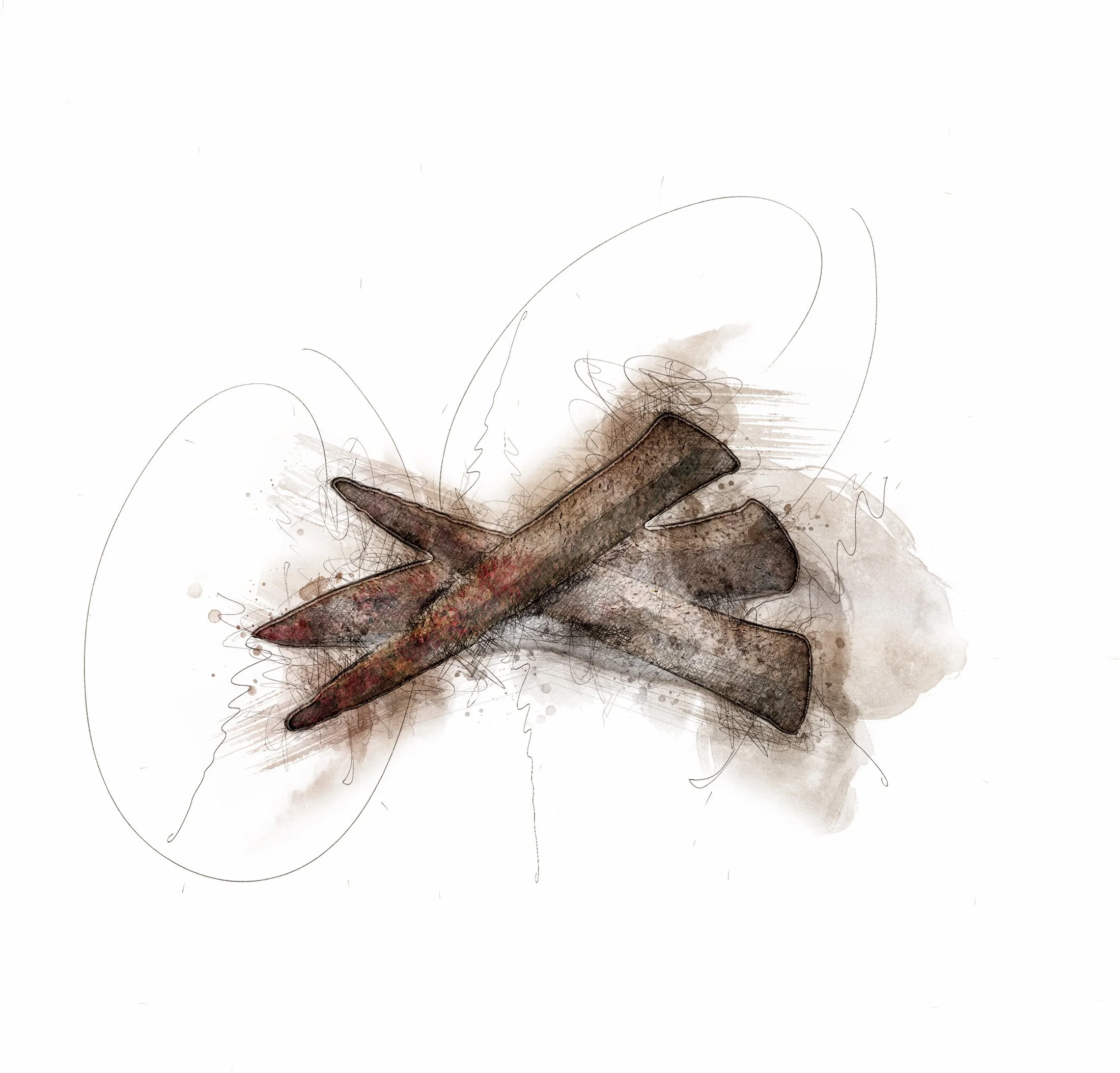19. The Unseen Sufferer
When we look at the cross, we see the suffering of Jesus, but maybe we have overlooked the pain that the Father experienced as He witnessed the torture and suffering of His only Son.
1 John 4:9 (ESV) In this the love of God was made manifest among us, that God sent his only Son into the world so that we might live through him.
Having seen the totality of the forgiveness of the Father, let us spend a moment to reflect upon what it cost Him to provide our salvation. The Romans designed crucifixion to be the most torturous and prolonged way to kill criminals. In fact, our word excruciating comes from the Latin for the cross, “crux”. In a typical crucifixion, they nailed the victim to a cross through their wrists * and their feet. As they tried to support their weight on the nails in their feet, this would cause intense pain. To escape this agony, the sufferer would try to pull themself up by the nails in their wrists, but again, this would be unbearable. No position would lessen the agony. Besides this, as they tired, their muscles cramped, so they could no longer pull themself up and could not inhale. Medical experts say that this partial suffocation would ease the cramp and allow the victim to pull themself up and breathe again. Inevitably, the cramp would return, repeating the process. Crucifixion involved a slow, agonising death from suffocation and loss of blood.
As we have mentioned before, Jesus not only endured this physical torture but also, while He was on the cross, took our sin into Himself. He experienced the shame, isolation and guilt caused by the sin of every human who has ever lived. We can only imagine the horror of what this must have been like.
I remember reading an article in a Christian magazine some years ago about a pastor dying of cancer. The piece recounted how one day, during his struggle with this disease, the pastor, himself a young dad, rang his own father to tell him he loved him and was praying for him. In response, the father thanked his son but replied that he didn’t need to pray for him. He said, “Son, we are all praying for you. You are the one with cancer. There is no need to pray for me.” The pastor thanked his dad for his love and prayers, but then answered, “Dad, I woke up this morning and I realised how I would feel if it was one of my boys who was struggling with this illness, and it made me realise how much you must be hurting too.”
I think most parents can understand this insight. When our children suffer, we suffer too. When they are hurting, everything within us wants to take that pain away. If it were possible, in a heartbeat, we would change places with them to free them from their distress.
When we look at the cross, we see Jesus suffering. But maybe we have overlooked the pain that the Father experienced as He witnessed the torture of His only Son. The Bible does not explain this, but I wonder how much it cost the Father to allow His Son to die for us. He could have intervened and stopped the crucifixion. He could have saved His Son and left us in our sin. Yet, because of His love for us, He allowed His Son to endure unimaginable pain so we might find forgiveness and grace.
Jesus did not save us from an angry Father. Instead, He carried out the will of His Father and died for us, even though it cost them both more than we will ever understand.
Further reading: Rom 5:8-10; 8:32; 1 Jn 4:9, 10, 16, 19
Maybe we have overlooked the pain that the Father experienced as He witnessed the torture of His only Son.
Have you ever considered how much it must have cost the Father to allow Jesus to suffer on the cross? Spend a moment thanking Him for the price He paid as He witnessed the suffering of His only Son.
*Although our English Bibles say the nails went through Jesus’ hands, the Greek word used refers not only to the hand but also to the wrist and forearm. History tells us that the Romans more often drove the nails through the wrists, as the structure of the hand was not sufficient to hold the weight of the victim.
This is an extract from my free book Knowing God as Father, which is available for download at Knowing God as Father.

